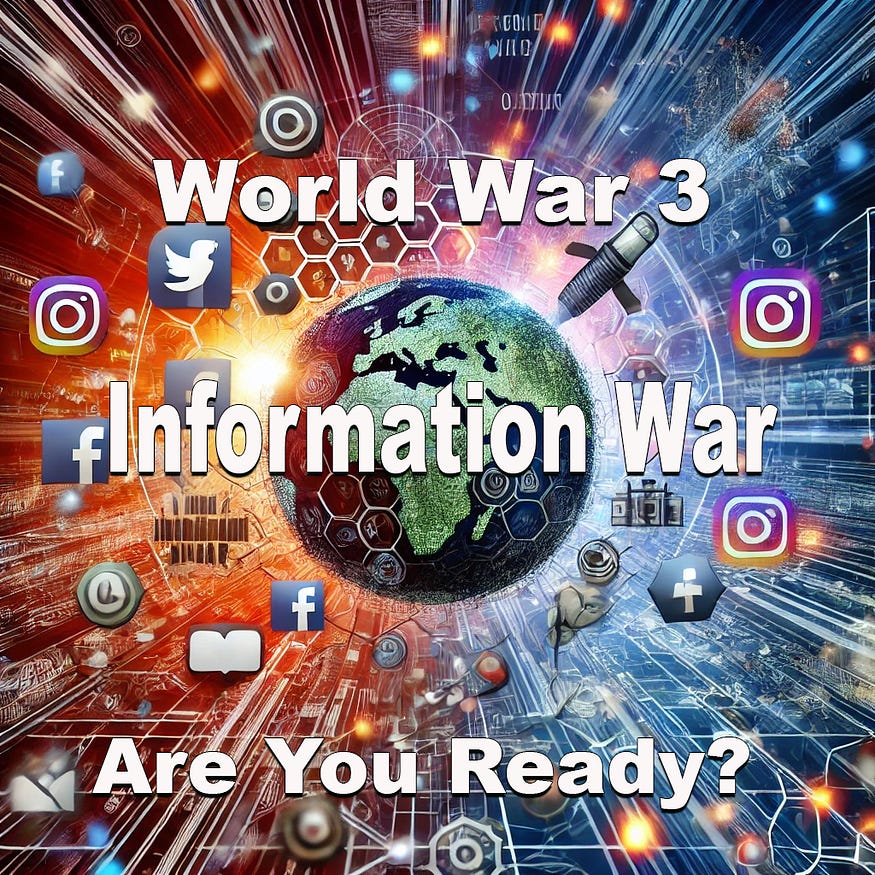The Information War
The 21st Century Cold War
The Cold War, a period of intense geopolitical tension between the United States and the Soviet Union, officially ended in the early 1990s. However, the ideological and strategic battles of that era have not disappeared; they have merely transformed. Today, the conflict continues in the form of an Information War, a new battlefield where the primary weapons are not tanks and missiles, but data and misinformation. This 21st-century Cold War involves complex strategies aimed at manipulating public opinion, undermining democratic institutions, and influencing global politics through the digital sphere.
The Nature of the Information War
The Information War is characterized by the strategic use of misinformation and disinformation to achieve political and ideological goals. Misinformation refers to false or inaccurate information spread without malicious intent, while disinformation is deliberately deceptive information spread to mislead and manipulate. Both forms are used extensively in the digital age to influence public perception and disrupt societal cohesion.
Key Tactics
Propaganda: Governments and political groups use propaganda to spread biased or misleading information to promote their agendas. This tactic has been refined and amplified through social media platforms, where algorithms can target specific demographics with tailored messages.
Cyber Attacks: Hacking and cyber attacks are used to steal sensitive information, disrupt communication networks, and undermine trust in institutions. These attacks can be state-sponsored or carried out by independent groups with political motives.
Fake News: The proliferation of fake news has become a significant concern. False stories are designed to look like legitimate news sources and are shared widely on social media, creating confusion and spreading false narratives.
Deepfakes: Advanced technologies like deepfakes, which use AI to create realistic but fake videos, are used to spread misinformation and damage reputations.
Historical Context: The Legacy of the Cold War
During the Cold War, the United States and the Soviet Union engaged in extensive propaganda campaigns to win hearts and minds around the world. The Soviet Union’s KGB employed “Active Measures” to influence public opinion and destabilize Western democracies. These measures included spreading false information, funding sympathetic political movements, and conducting covert operations. Vladimir Putin, who served in the KGB, has revived these tactics in the digital age, leveraging modern technology to enhance their effectiveness.
The Role of Russia and Putin’s Strategy
Under Vladimir Putin, Russia has continued to pursue the goals of the Soviet Union by exploiting the vulnerabilities of open societies. Russia’s strategy involves:
Undermining Trust: By spreading misinformation and fostering distrust in democratic institutions, Russia aims to weaken its adversaries from within.
Sowing Division: Amplifying divisive issues such as race, immigration, and political ideology helps to polarize societies and weaken social cohesion.
Discrediting Leaders: Targeting political leaders with disinformation campaigns to undermine their credibility and influence.
Sources:
Foreign Affairs on Russian Foreign Policy
Brennan Center for Justice on Cyber Attacks and Misinformation
Harvard Kennedy School on Propaganda and Fake News
The Impact on American Democracy
The United States, often perceived as the global leader in technology and intelligence, is particularly vulnerable to these tactics. The open nature of American society, with its free press and democratic institutions, makes it an ideal target for information warfare. The 2016 and 2020 presidential elections highlighted the extent to which foreign interference and misinformation campaigns can influence public opinion and electoral outcomes.
The Role of AI and Technology
Artificial Intelligence (AI) and advanced algorithms play a dual role in the Information War. On one hand, they can be used to spread misinformation more effectively. On the other, AI can also help detect and counter these threats. Platforms like HASE.ai utilize AI to fact-check information and provide users with accurate, unbiased data, thereby helping to combat misinformation and promote informed decision-making.
Conclusion
The Information War represents the latest evolution of the Cold War, where the battle is fought in the digital realm. Understanding the tactics and strategies used in this conflict is crucial for defending democratic values and maintaining global stability. By recognizing the threats posed by misinformation and disinformation, leveraging technology to counter these threats, and promoting media literacy and critical thinking, societies can navigate this complex landscape and uphold the principles of democracy.
Hashtags
#InformationWar #ColdWar #Misinformation #Disinformation #AI #Democracy #Geopolitics #CyberSecurity #DigitalAge #RussianStrategy



